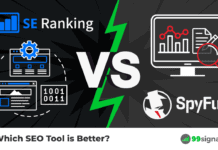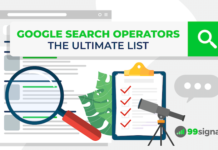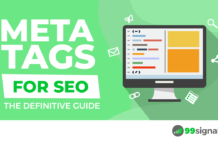
Blogging is an essential part of digital marketing. According to Content Marketing Institute’s B2B Content Marketing 2022 Report, 73% of B2B marketers have a content marketing strategy and 76% use the blog to distribute their content.

Source: Content Marketing Institute
You can also start building and scaling your inbound customer acquisition efforts by hiring multiple writers. However, your blog will flop if they don’t create top-notch content.
That’s where editorial style guidelines come in; you need a well-written one for your team to create content that meets your needs.
In this article, we’ll cover:
- The meaning of editorial style guidelines
- Its benefits
- The elements to include in your guide
- How to create good editorial guidelines
- Examples of awesome editorial guidelines
Let’s dive in.
Table of Contents
What are Editorial Guidelines?
They’re rules that dictate how you create content for your blog. Blog owners and content marketing strategists often send their writers their editorial guidelines before they start writing. Here are some details marketers include in their editorial guides:
- Post style and formatting
- Grammar and punctuation rules
- Guest blogging requirements
- Considerations for different social media platforms
- The publishing process, etc.
Let’s pick a blog like Entrepreneur. They have several contributors. Their site would be so chaotic if they didn’t have rules that authors follow when writing content.
Bottom line: Editorial guidelines ensure consistency in your content in the world of distributed marketing.
4 Benefits of Having an Editorial Style Guide
Most companies don’t have editorial guidelines. Some think it’s a waste of time. Others don’t see its essence. But you’ll consider creating one today to complement your content strategy framework goals once you know its benefits below.
Maintain Brand Consistency
You’ll dump your favorite restaurant if they start cooking whack food. That happens in the digital world—your customers will choose your competitors over you if your brand is inconsistent.
If you work with multiple authors, you must maintain the quality of your posts. Your content will look like it’s written by one author, keeping your audience coming back for more. This is especially important for content marketing agencies that produce content for multiple brands and industries.
Ensure Seamless Collaboration with Other Brands
You have to work with other brands to scale your online business. They will request you for guest posting opportunities and vice versa.
But how will your partners write good content for your blog if you have no editorial guidelines? Tricky. But by creating one, guest authors will know your blog’s expectations like your ideal content length, formatting, link practices etc. They will use your instructions to create content that your readers love, converting them into customers. That’s what the best content marketing agencies strive to do for their clients.
Save Time for Writers and Editors
Editorial guidelines will make your life easy. If you give your writers the right instructions, you’ll offload some tedious tasks like editing and formatting your posts.
Say you accept guest posts on your site, you can save your writers time by approving their topics before they write—you won’t have to reject a whole post.
Also, the guidelines will come in handy to increase your posting frequency and meet your content calendar goals.
Keep Writing Fun and Straightforward
Writers are different. Imagine telling your new writers to create a high-quality post without giving them instructions. They will do it their way, which may not be what you want.
So, have a straightforward process for working with your team to remove ambiguities. You can provide your writers with industry SEO tips as well as have them mark off checkboxes in your guidelines to ensure they follow all instructions before submitting work. You’ll reduce the number of revisions by half.
Key Elements to Include in Your First Editorial Guidelines
Do some quick research; you’ll realize companies have different editorial guides, meaning there’s no one-size-fits-all format for creating the piece. Usually, it’s more specific and clear than just a list of SEO writing tips but it’s a good place to start with SEO considerations in mind. You’ll choose what to include to create a custom guide for your brand.
Remember: this content style guide is a living document that can change and iterate over time, so it’s not necessary to get it perfect at the beginning.
Next, we’ll discuss the main elements in an editorial manual.
Who You Serve Online
Your blog is about your readers, not you. They deserve to get content that meets their needs.
So, your editorial guide should mention your target audience for your writers to know who they will address. If possible, describe your buyer persona for your team to write articles your readers resonate with.
Your Content Requirements
Companies have different content needs. Maybe a certain type of content works well for your niche. It could be list posts, ultimate guides, etc. You have to mention that on your editorial page.
Here are other content requirements to include in your guide:
- Content length – 600, 1000 words or more?
- The number of images you want
- The intros you expect – short or long?
- The subheadings you prefer – plain or catchy?
Side note: Always tell your writers to submit unique content that hasn’t been published anywhere online.
Examples of Previous Successful Posts
Creating high-quality content is easier said than done. Sometimes you have to show, not tell to get top-notch posts from your team. That’s why good editorial guidelines have samples of the best posts.
If you have a guest posting page, include one or two posts from your guest authors. Your writers and business partners will then know the quality of work you expect.
Your Linking Best Practices
Your posts can’t be complete in Google’s eyes if you don’t link to internal and external resources. You must include at least two relevant links in your articles. You can do it yourself or outsource the task to your writers.
Here’s what your link section should cover:
- The number of internal links/guide
- The number of links guest authors get
- Credible resources writers should link to
- How to create hyperlinks – how many words can an anchor text be?
A good linking strategy will save you and your writers time.
Your Style and Formatting Best Practices
Your blog will look disorganized if you don’t follow a standard style and formatting procedure. That’s why the editorial pages of most blogs have a section for the format. Here’s what you can include in yours:
- Whether you align with the Chicago Manual of Style or Associated Press (AP) Stylebook
- Where authors should source images
- The number of bullet points to use
- Headers, abbreviations and capitalization
- Your desired spacing
- The font type and size
- The number of sentences per paragraph
Ex: If you run a self-improvement blog like Tiny Buddha, your writers can include a relevant quote below one or two subheads to support their content.
Your Preferred Brand Voice and Tone
Maybe you use a casual tone because your blog addresses teenagers, or stay formal for the sake of corporates. Either way, your audience will appreciate it if your brand tone and voice remain consistent throughout your copies. That’s why you need a section on your brand style guide.
Remember, writers have unique voices and tones but can adapt to different styles. So, highlight your requirements to avoid confusing your readers.
Pro tip: Give your writers some samples to show them your expected brand tone and voice.
Industry Jargon
Jargon is in all niches; we bet yours has many. Why not create a list of those terminologies and common words to show everyone how to use them? For example, if you run an online store, should writers use e-commerce or eCommerce? Clarify that to maintain consistency.
Alternatively, tell your writers to avoid using jargon.
Your Grammar and Punctuation Rules
Your readers will stop reading your articles with several grammar and punctuation mistakes—you’ll lose everyone after investing so much in your blog. Sad.
That’s why you need a grammar and punctuation section in your guide. Here’s what you can highlight here:
- How to use different punctuation marks like commas, semi-colons, and colons.
- Your unique rules. Ex: are you against starting a new sentence using conjunction?
- Your target geo. If your blog targets Americans, you’ll use terms like color instead of colour.
Pro tip: Your authors should pass their work through content editing tools like Grammarly before submission.
Your Work Process
Your team deserves to know your standard operating procedures; you must indicate them in your editorial guidelines. Here’s what a good work process covers:
- When your writers should submit their first draft – after 3, 5, 7 days or more?
- Your publishing frequency
- Submission format – Microsoft Word or Google Documents?
- Your payment method, etc.
Everyone will look forward to working with you if you’re straightforward.
Steps to Create Editorial Guidelines That Stand Out
It’s easy to draft editorial guidelines if you’ve picked the elements to include. Next, we’ll teach you how to write a good one.
Start with the Basics
First, mention what your blog is about and the audience you serve. For instance, if you run an eCommerce blog, are you targeting beginners or advanced marketers? Your team will create content that meets your buyer’s journey.
Next, pick the tone you’ll use. If you have a comic blog, it’s okay to use a fun tone. If you’re targeting professionals, stay formal. Also, your writers will also tweak their writing style to match your brand’s tone.
Choose Your Elements Wisely
Editorial guidelines can have different elements we’ve discussed above. You’ll pick the ones to include in your guide. Here’s what I’d choose if I were creating the guidelines for my brand:
- My work process – submit 2-3 content ideas before creating your first draft. Your post will go through 2-3 rounds of edits before publishing.
- Content requirements – all posts should be 1500+ words
- Image requirements – avoid royalty-free images
- Linking best practices – includes four internal links and two external links in your posts
- Grammar and punctuation rules – pass your copy through Grammarly before submission.
Add as many elements as you wish. We’ll give some inspos later.
Select Your Go-to Format
By now, you’ve written your first editorial guidelines. Nice. It’s time to make it go live. But first, you need a format for publishing it. You have these options:
- Microsoft word
- Google Docs
- Other document publishing tools
Note: Choose one, then add the guide on your site for your contributors and writers to access it.
Examples of Great Editorial Guidelines From Top Brands
Companies have unique style guides. You’ll create a custom one too. We’ve cherry-picked the best editorial style guide templates to show you what a good one should look like.
Omniscient Digital
Omniscient Digital is a high-end premium agency for B2B SaaS to build and scale their content needs. They have a detailed guide that their team uses to create high-quality content for their clients. Here’s Omniscient’s editorial guidelines:

The key elements they included:
- Content requirements
- Voice and tone expectations
- Their work process
- SEO guidelines
- Guest blogging expectations
- Grammar and punctuation rules
The brand’s style and expectations are clear. They even give their writers examples in the grammar and punctuation section, e.g., how to use different punctuation marks like periods, commas, and dashes.
G2 Learning Hub
G2 Learning Hub’s blog targets marketers, sales professionals, and business enthusiasts. They have guidelines that writers, and marketing professionals follow when creating their content. Check out G2’s editorial guidelines:

The key elements included:
- Content length
- The content they want
- The technical details like how to cite statistics from third-party platforms
Also, G2 also has a FAQ section for clarifying issues arising during the publishing phase. For instance, their guest authors will know what to expect after submitting their pitch.
Entrepreneur
Entrepreneur is a top business blog that accepts new contributors. They’ve included their guidelines on their site. Here’s what it looks like:

The key elements they included:
- Content length
- Style and formatting
- Basic grammar rules
- Image instructions
- Link policy
Get inspiration from their process to create the next mega site like theirs.
Search Engine Journal
Last, Search Engine Journal is another marketing blog. They also work with a team of writers and contributors. Check out their writing rules:

The key elements they included:
- Content requirements
- SEO best practices
- Their publishing process
- Rules for republishing content
The brand’s editorial style guideline is well-organized. If you click their formatting and grammar section, you’ll find instructions on the right headings to use, how to write the numbers, etc.
Time to Create Your First Editorial Guidelines
An editorial guideline is a must-have if you work with multiple writers to scale your customer acquisition needs; it should be in your list of content creation hacks.
It’s easy to create editorial guidelines considering there’s no specific format we use. You’ll only have to highlight the basics we discussed above and pick the desired elements to include in your masterpiece.
So, create your first editorial manual today. Your authors will send you content that generates leads and sales than businesses without editorial guidelines.
If you found this article useful, please share it on Twitter using the link below:
Editor’s Note: This article was originally published on September 5, 2022 and has been updated frequently since then for freshness, accuracy, and comprehensiveness.
Related Articles









